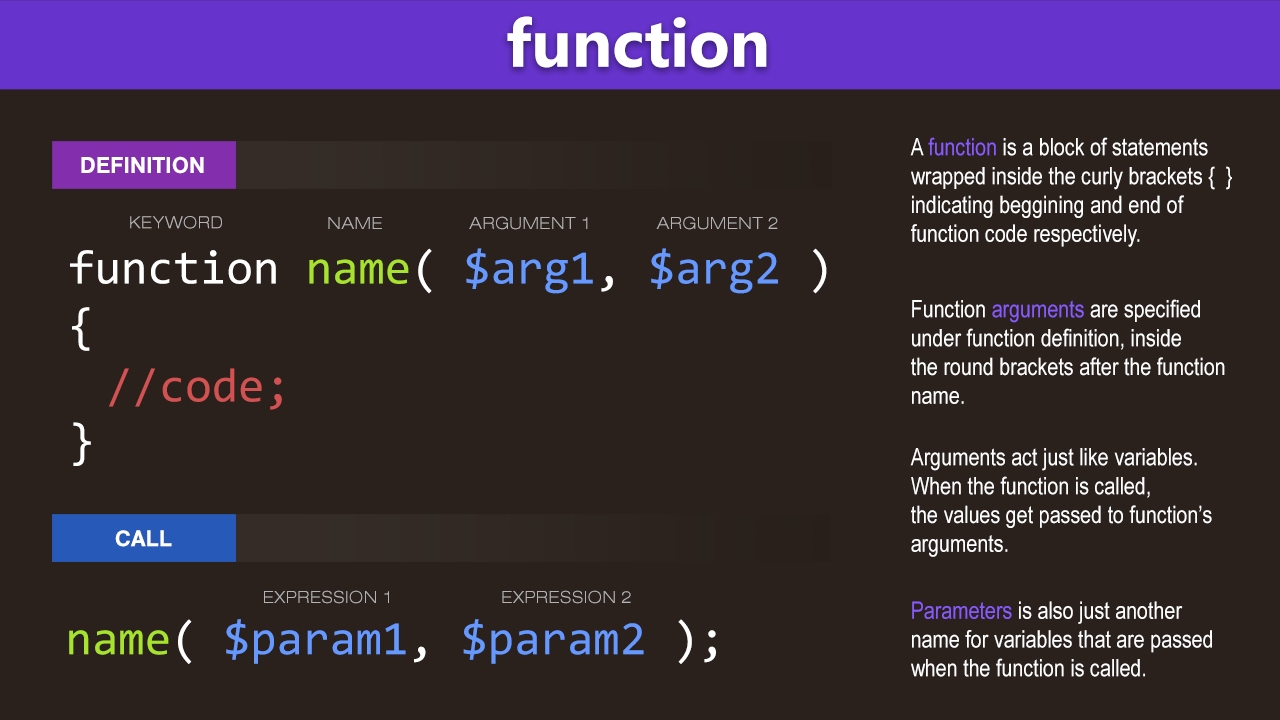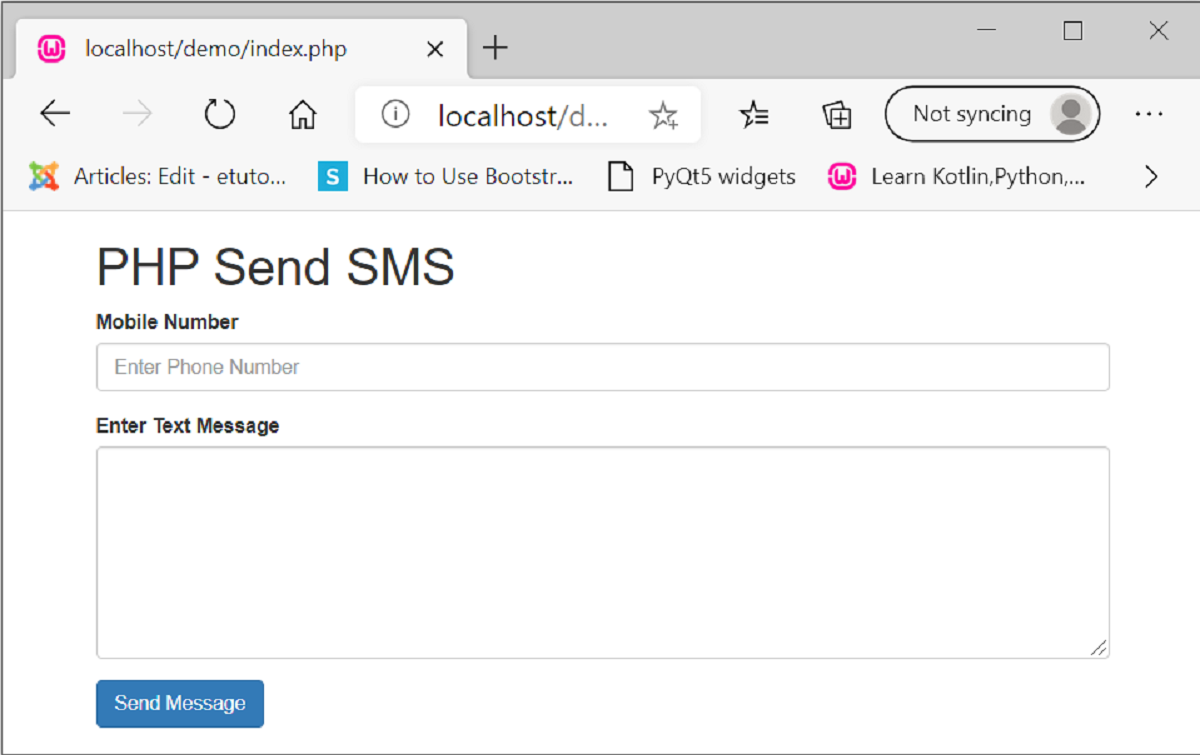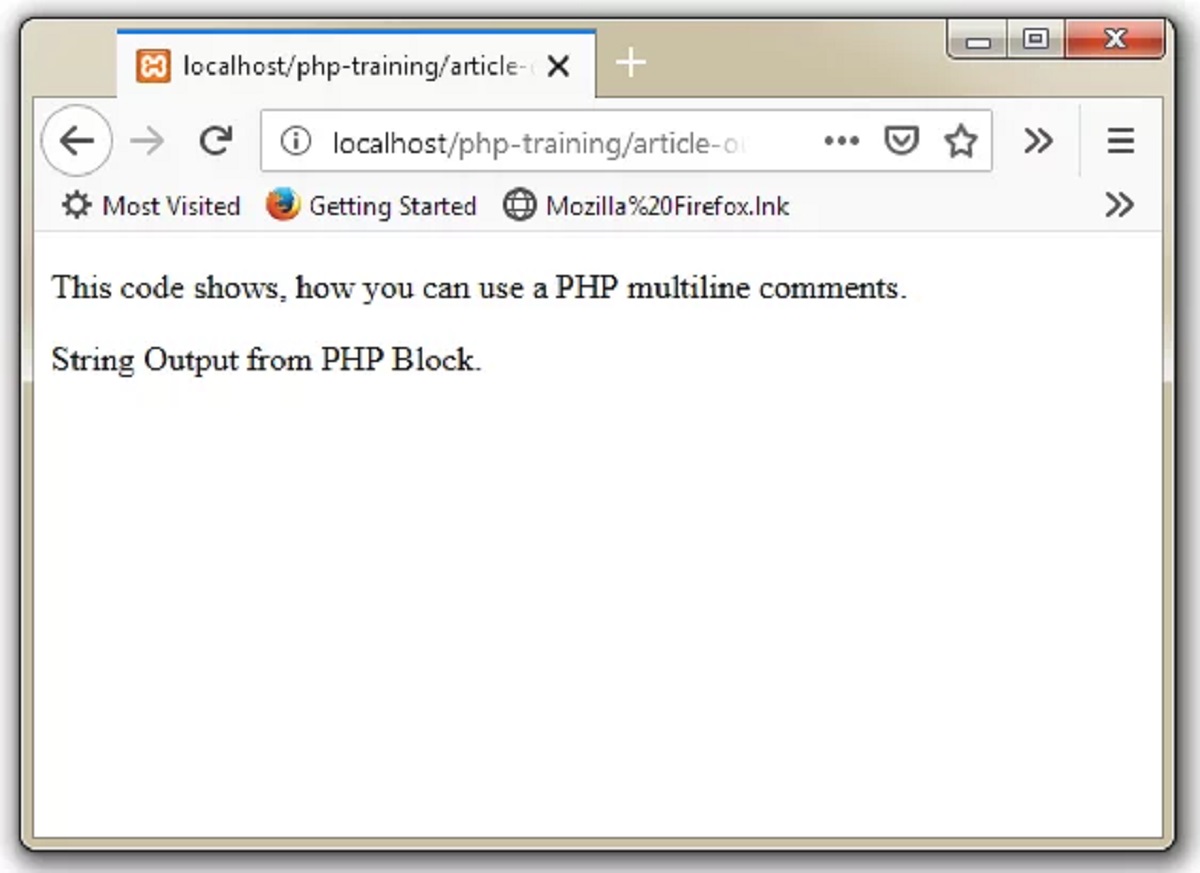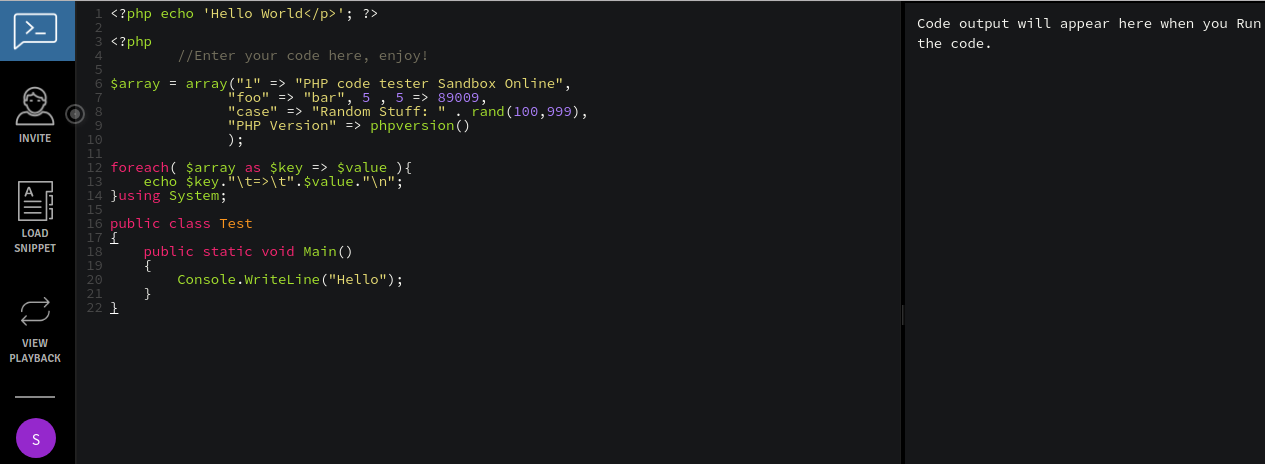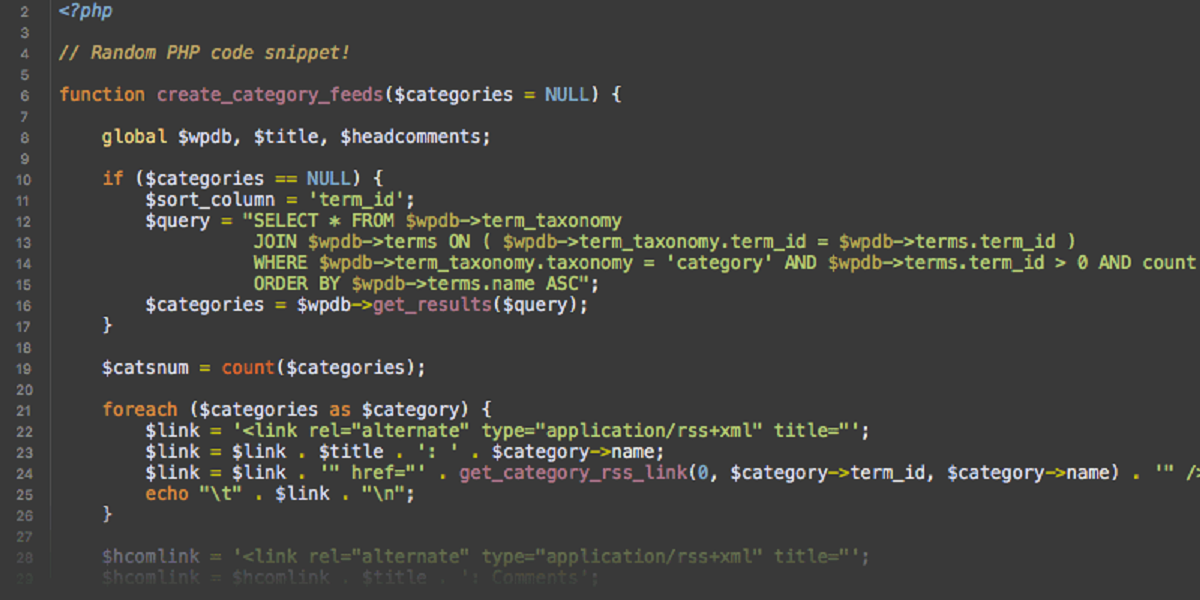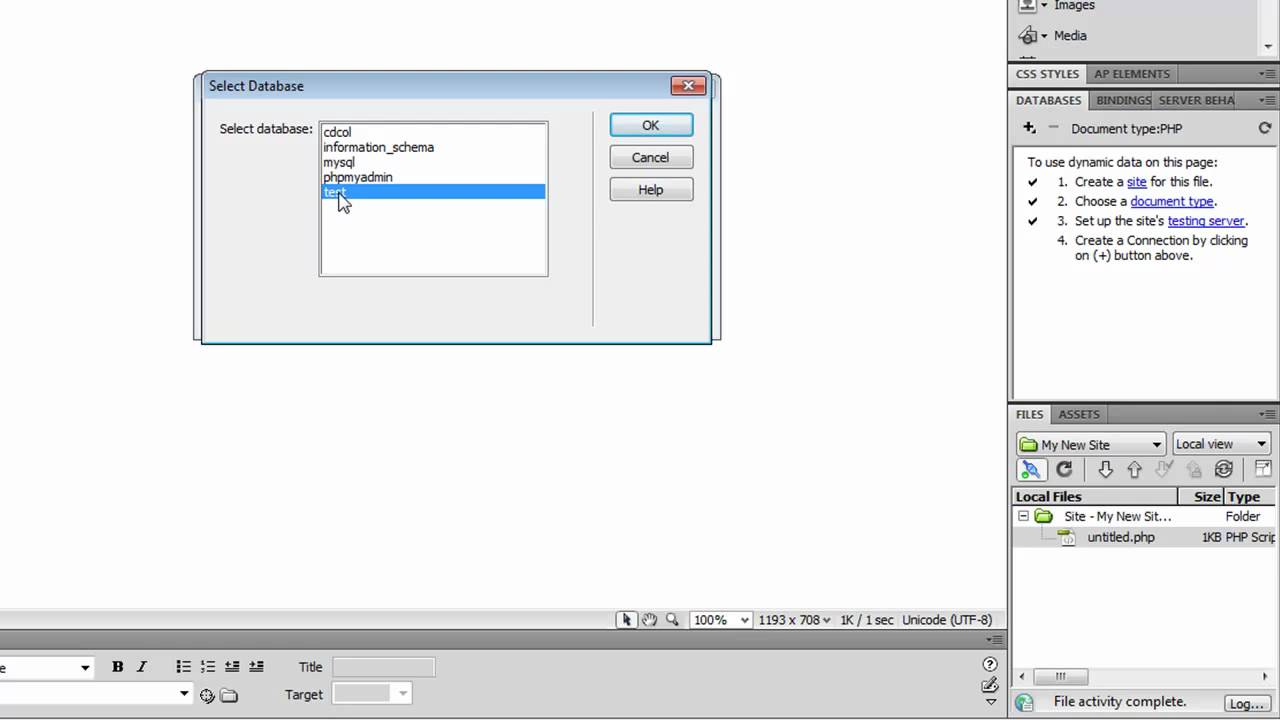Introduction
A function is a key concept in PHP programming, allowing developers to break down their code into smaller, reusable blocks. It plays a crucial role in making code more organized, efficient, and easy to maintain. Functions in PHP are flexible and versatile, providing a way to encapsulate a set of instructions and execute them whenever needed.
PHP, which stands for Hypertext Preprocessor, is a widely used scripting language specifically designed for web development. It allows developers to create dynamic web pages and interact with databases, among other things. With PHP functions, developers can reduce redundancy and achieve modular code, improving the overall quality and efficiency of their projects.
In this article, we will explore the fundamentals of writing functions in PHP, including the syntax, naming conventions, input parameters, return statements, and calling functions. We will also discuss the differences between built-in functions and user-defined functions, and provide examples of some useful PHP functions.
Whether you are a beginner or an experienced PHP developer, understanding how to write and use functions is essential for building robust and maintainable web applications. So, let’s dive into the world of PHP functions and learn how to harness their power!
What is a function in PHP?
In PHP, a function is a block of code that performs a specific task. It is a modular unit that encapsulates a set of instructions and can be called or invoked whenever needed. Functions provide a way to organize code and make it more manageable and reusable.
Functions in PHP can be used to perform a wide range of tasks, from simple calculations to complex operations. They can take input parameters, process them, and return a value or perform an action based on the provided inputs. This allows developers to write code that is concise and efficient, as functions can be reused multiple times with different input values.
One of the key benefits of using functions in PHP is code reusability. By breaking down your code into smaller, modular functions, you can avoid duplication and create more maintainable code. If the same set of instructions needs to be executed in different parts of the code, you can simply call the function instead of rewriting the entire block of code.
Another advantage of using functions is code readability. By encapsulating a set of instructions within a function, you can give it a meaningful name that describes its purpose. This makes it easier for other developers (and even yourself) to understand what the function does without having to analyze the entire code block each time.
Furthermore, functions in PHP can help improve code efficiency. By using functions to perform repetitive tasks, you can write code that is concise and modular. This avoids code redundancy and makes it easier to maintain and modify your code in the future.
Overall, functions are an integral part of PHP programming. They provide a way to organize and encapsulate code, promote code reusability, enhance code readability, and improve code efficiency. Understanding how to effectively write and use functions is essential for any PHP developer, as it can greatly improve the quality and efficiency of their code.
Syntax of a function
In PHP, functions follow a specific syntax that defines how they are declared and structured. Understanding the syntax of a function is crucial for writing effective and functional code.
Here is the basic syntax of a function in PHP:
function functionName(parameter1, parameter2, ...) {
// Code to be executed
return value;
}
Let’s break down the different components of this syntax:
function: This keyword is used to declare a function in PHP.functionName: This is the name given to the function and should be unique within the code.parameters: Parameters are variables that are passed to the function for it to work with. They are optional and can be one or more.{}: The curly braces enclose the block of code that defines the function’s behavior.// Code to be executed: This is where you write the instructions that the function will execute when called.return value: If the function needs to return a value, you can use thereturnkeyword followed by the value to be returned.
It’s worth noting that functions don’t always require parameters or a return statement. Some functions may perform actions without returning a value, while others may not require any input parameters. The usage of parameters and return statements depends on the specific requirements of the function and the task it is intended to perform.
Here’s an example of a simple function that adds two numbers and returns the result:
function addNumbers($num1, $num2) {
$sum = $num1 + $num2;
return $sum;
}
In this example, the function is named addNumbers and takes two parameters, $num1 and $num2. Inside the function, the two numbers are added, and the sum is returned using the return statement.
Understanding the syntax of a function in PHP is essential for writing well-structured and functional code. It allows for the creation of reusable modular blocks of code that can be called multiple times throughout the program, enhancing code readability and maintainability.
Function name and parameters
When creating a function in PHP, it is important to choose a meaningful and descriptive name that reflects its purpose. The function name should be unique within the codebase and follow certain naming conventions.
Here are some guidelines to consider when naming a function:
- Use descriptive and meaningful names: The function name should clearly indicate what the function does. It should be concise and reflect the purpose of the function.
- Follow naming conventions: In PHP, it is common to use lowercase letters and underscores to separate words in function names. This makes the function name more readable and easier to understand.
- Avoid using reserved words: Make sure the function name does not conflict with any reserved words or existing PHP functions. This can lead to unexpected errors and conflicts in your code.
Parameters, also known as arguments, are variables that are passed to a function for it to work with. They provide a way to pass data to the function and can be used in the function’s code block. Parameters are optional and can be one or more, depending on the requirements of the function.
When defining function parameters, you need to specify the data type and optionally provide default values. The data type helps ensure that the correct type of data is passed to the function, while default values allow parameters to have a predefined value if no value is provided during the function call.
Let’s look at an example:
function greet($name, $age = 30) {
echo "Hello, " . $name . "! You are " . $age . " years old.";
}In this example, the function is named greet and accepts two parameters: $name and $age. The first parameter, $name, does not have a default value and must be provided when calling the function. The second parameter, $age, has a default value of 30. If no value is passed for the $age parameter, it will default to 30.
You can then call the function and pass values for the parameters like this:
greet("John", 25);This will output:
Hello, John! You are 25 years old.Function names and parameters are important considerations when creating PHP functions. Choosing descriptive and meaningful names and defining parameters correctly can greatly improve the clarity and functionality of your code.
Return statement
In PHP, the return statement is used within a function to specify the value that the function should return after completing its execution. It allows a function to provide a result or output that can be used or assigned to a variable in the calling code.
The return statement is typically used when a function needs to perform some calculations or operations and provide a result back to the calling code. It allows you to capture and utilize the output of the function in other parts of your program.
Here’s the basic syntax of a return statement in PHP:
return expression;The expression can be any valid PHP expression that determines the value to be returned by the function. It can be a variable, a constant, or the result of an operation or calculation.
Let’s consider an example:
function multiply($num1, $num2) {
$product = $num1 * $num2;
return $product;
}In this example, the multiply function takes two parameters, $num1 and $num2, multiplies them together, and stores the result in the $product variable. The return statement is used to return the value of $product as the output of the function.
The returned value can then be assigned to a variable or used directly in the calling code. For example:
$result = multiply(5, 6);
echo $result; // Output: 30In this case, the value returned by the multiply function, which is 30, is assigned to the $result variable. The $result variable can then be used for further calculations or displayed as output in the program.
The return statement is an essential element in functions, as it allows you to pass data from the function back to the calling code. It enables the function to be more flexible and versatile, as the output can be used in various ways depending on the requirements of the program.
Calling a function
In PHP, calling a function means executing the block of code within the function. Once a function is defined, it can be invoked or called multiple times throughout your code to perform the desired tasks.
Here is the basic syntax for calling a function:
functionName(argument1, argument2, ...);The functionName is the name of the function you want to call, and the arguments are the values you pass to the function’s parameters.
Let’s consider a simple example:
function greet($name) {
echo "Hello, " . $name . "!";
}
greet("John");
In this example, we have a function named greet that accepts one parameter, $name. When we call the function greet("John"), it passes the value “John” as the argument for the $name parameter. The function then executes and displays the output, in this case, “Hello, John!”.
Note that when calling a function, the arguments must match the expected number and order of the function’s parameters. Additionally, it is important to provide the correct data types for each argument to ensure the function behaves as intended.
Another important aspect of calling functions is capturing and utilizing their return values. If a function has a return statement, you can assign the returned value to a variable or use it directly in your code. For example:
function multiply($num1, $num2) {
$product = $num1 * $num2;
return $product;
}
$result = multiply(5, 6);
echo $result; // Output: 30
In this example, the multiply function is called with arguments 5 and 6. The returned value, 30, is assigned to the $result variable, which is then echoed to display the output as 30.
Calling functions allows you to organize and reuse your code, making it more efficient and manageable. By encapsulating specific actions or computations within functions, you can call them whenever needed, reducing code duplication and promoting code modularity.
Built-in functions vs User-defined functions
In PHP, there are two types of functions: built-in functions and user-defined functions. Understanding the differences between these two types is essential for effective programming and code development.
Built-in functions, also known as predefined functions or native functions, come bundled with PHP and are readily available for use without any additional setup. These functions are already implemented in the PHP language and offer a wide range of functionality. They provide solutions to common programming tasks such as manipulating strings, performing mathematical calculations, working with arrays, handling files, and interacting with databases.
Here are a few examples of built-in PHP functions:
strlen(): Returns the length of a string.array_push(): Adds one or more elements to the end of an array.date(): Formats a timestamp into a readable date and time.file_get_contents(): Reads a file and returns its contents as a string.
On the other hand, user-defined functions are functions created by the programmer based on specific requirements. These functions are not provided by default and need to be defined by the programmer before they can be used. User-defined functions allow developers to encapsulate a set of instructions and provide a way to reuse code throughout their projects.
Here’s an example of a user-defined function:
function calculateSquare($number) {
$square = $number * $number;
return $square;
}In this example, calculateSquare() is a user-defined function that calculates the square of a given number. We define the function with the keyword function, provide a name for the function, and specify the parameter $number. The function then returns the square of the number using the return statement.
The main difference between built-in and user-defined functions lies in their origin. Built-in functions are provided by PHP, while user-defined functions are created by the programmer. Both types of functions play essential roles in programming, allowing developers to leverage existing functionality and create custom solutions tailor-made for their specific needs.
By understanding the capabilities and limitations of built-in and user-defined functions, developers can choose the best approach for their programming tasks. Utilizing built-in functions can save time and effort, while creating user-defined functions allows for code modularity, reusability, and customization.
Examples of useful PHP functions
PHP offers a plethora of built-in functions that provide powerful functionality and simplify common programming tasks. These functions cover a wide range of areas, including string manipulation, array handling, mathematical operations, file handling, and more. Here are a few examples of useful PHP functions:
strlen(): This function returns the length of a string. It is useful for determining the number of characters in a string, which can be helpful in tasks such as input validation or truncating text.array_push(): This function adds one or more elements to the end of an array. It is commonly used to insert new values into an existing array, expanding its size dynamically.date(): Thedate()function formats a timestamp into a readable date and time. It allows you to extract specific information, such as the current date or time, and format it according to your needs.file_get_contents(): This function reads the contents of a file and returns it as a string. It is handy for fetching the contents of a text file, such as HTML templates, configuration files, or log files.preg_match(): This function performs a regular expression match on a string. It enables you to search for specific patterns or validate input based on a pattern matching criteria.json_encode()andjson_decode(): These functions allow you to convert data to and from JSON format. They are essential when working with APIs or exchanging data between different systems.explode()andimplode(): These functions respectively split a string into an array based on a specified delimiter and join the elements of an array into a string using a delimiter. They help to manipulate and transform data in various formats.filter_var(): This function validates and sanitizes various types of data, such as URLs, email addresses, integers, and more. It is useful for input validation and ensuring data integrity.
These are just a few examples of the many useful PHP functions available. Understanding the various built-in functions and their functionalities can greatly enhance productivity and streamline code development, enabling developers to accomplish tasks more efficiently.
Conclusion
In PHP programming, functions play a critical role in organizing and optimizing code. They allow developers to encapsulate a set of instructions, making code more modular, reusable, and efficient. By understanding the syntax of functions, naming conventions, proper usage of parameters, and return statements, developers can create well-structured code that is easy to read, maintain, and enhance.
There are two types of functions in PHP: built-in functions and user-defined functions. Built-in functions come bundled with PHP and provide a wide range of functionality for common programming tasks. User-defined functions, on the other hand, are created by the programmer to address specific requirements and promote code reusability.
Throughout this article, we have explored the significance of functions in PHP programming, including their purpose, syntax, and various features. We have examined the importance of naming functions and choosing meaningful parameter names. Additionally, we have discussed the utilization of return statements to handle output and demonstrated the differences between built-in and user-defined functions.
By harnessing the power of functions, developers can create modular code that is easier to test, debug, and maintain. Functions improve code organization, promote reusability, and enhance the overall efficiency and readability of the codebase.
As you continue your journey in PHP development, consider leveraging the vast array of built-in functions available in PHP. Additionally, don’t hesitate to create your own user-defined functions to address specific requirements and enhance the functionality of your applications.







